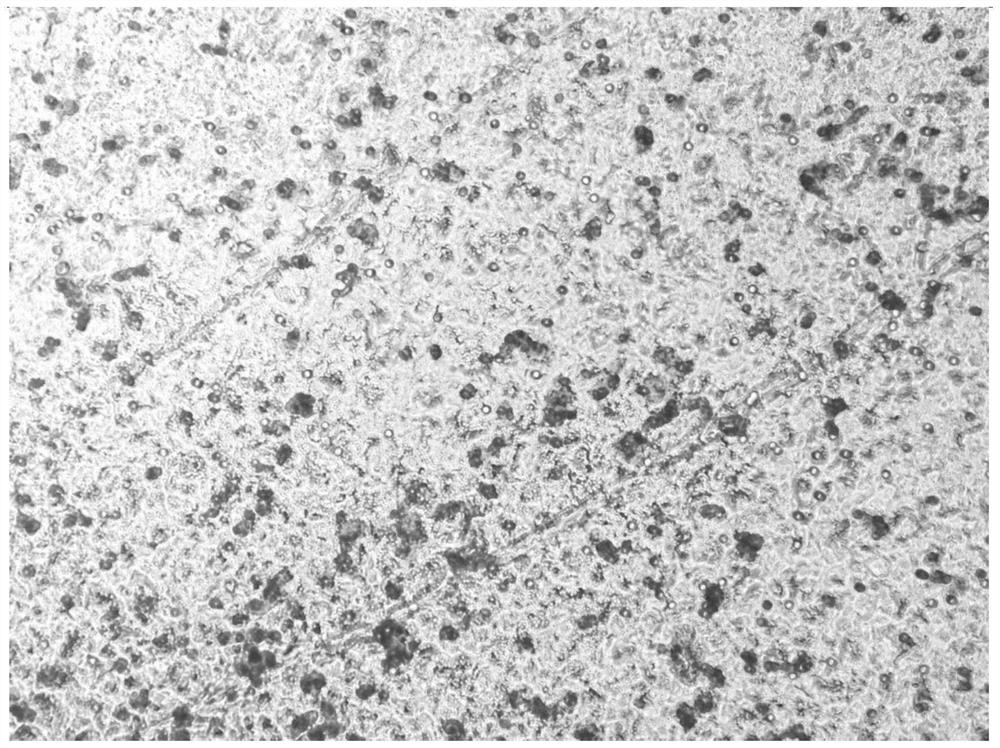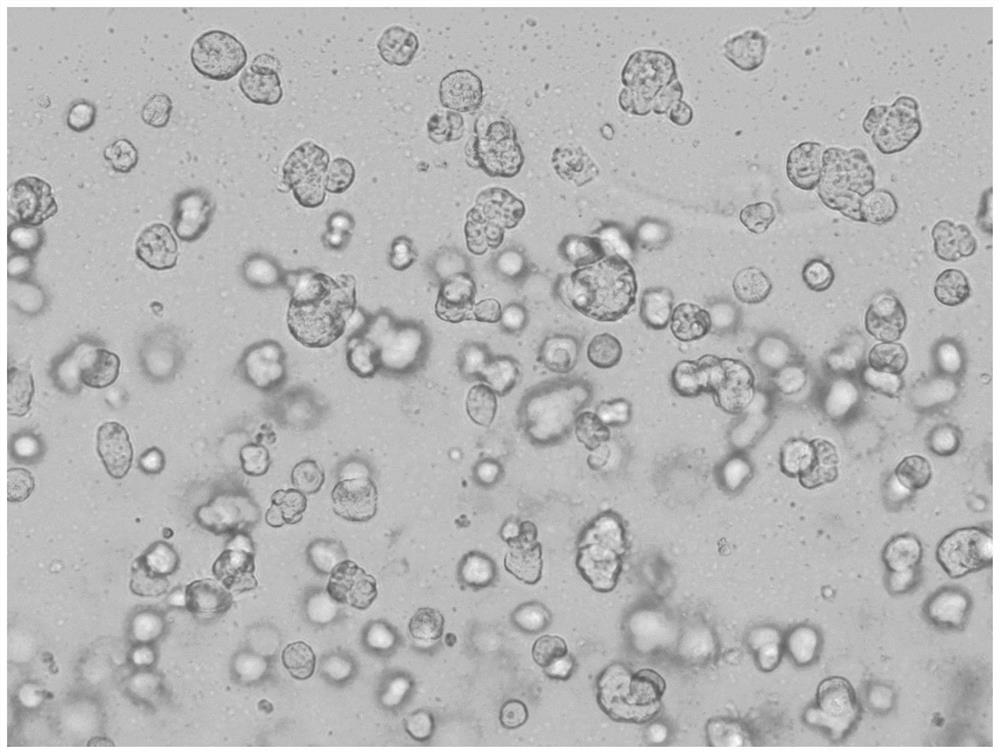Method for preparing matrigel by using animal carcass
A technology of animal carcasses and matrigel, which is applied in the field of biochemistry, can solve the problems of labor and labor, and achieve the effect of convenient material collection and high output
- Summary
- Abstract
- Description
- Claims
- Application Information
AI Technical Summary
Problems solved by technology
Method used
Image
Examples
Embodiment 1
[0022] An 8-week-old Balb / c mouse was taken and weighed 23 grams. After carbon dioxide asphyxiation treatment, the fur was stripped and the internal organs were cleaned. The remaining part was about 16 grams. Mice carcasses were minced with surgical scissors, snap-frozen in liquid nitrogen, and carefully ground into powder using a mortar. After the liquid nitrogen was evaporated, 32 mL of pre-cooled PBS solution was added and stirred at 4°C overnight to extract cell matrix proteins. After centrifugation at 8000g, the pellet was discarded. Saturated ammonium sulfate was slowly added to the supernatant to 20% saturation, the precipitate was left to stand at 4°C for 30 minutes, and the precipitate was collected by centrifugation at 8000 g. The pellet was dissolved with 8 mL of PBS, and dialyzed overnight using a 7 kD dialysis bag. The dialysate was changed, and dialysis was continued overnight using DMEM high-glucose medium. Place the matrigel on ice in an ultra-clean bench an...
Embodiment 2
[0024] An 8-week-old SD rat was taken and weighed 232 grams. After carbon dioxide asphyxiation treatment, the fur was peeled off and the internal organs were cleaned. The remaining part was about 137 grams. The mouse carcasses were pulverized using a liquid nitrogen pulverizer. After the liquid nitrogen evaporated, 270 mL of pre-cooled PBS solution was added and stirred at 4°C overnight to extract cell matrix proteins. After centrifugation at 8000g, the pellet was discarded. Saturated ammonium sulfate was slowly added to the supernatant to 20% saturation, the precipitate was left to stand at 4°C for 30 minutes, and the precipitate was collected by centrifugation at 8000 g. The precipitate was dissolved with 40 mL of PBS, and dialyzed overnight using a 7 kD dialysis bag. The dialysate was changed, and dialysis was continued overnight using DMEM / F12 medium. Place the matrigel on ice in a clean bench and dispense the matrigel into centrifuge tubes. The protein concentration me...
Embodiment 3
[0026] HepG2 cells were grown to a confluency of 60% to 80%, gently rinsed with PBS for 3 times, replaced with serum-free medium, and placed in a cell incubator at 37°C and 5% CO2-saturated humidity for 24 hours (serum starvation); Example 1 Thaw the prepared mouse-derived Matrigel at 4 degrees. Add 70 μl of 1:8 diluted Matrigel (diluted with serum-free DMEM medium) to the upper chamber of the Transwell, and place it at 37°C, 5% CO. 2 After incubating in a humidified cell incubator for 8 hours, discard the supernatant and gently rinse with PBS twice; add 100 μl of serum-free DMEM to each well and incubate at 37°C for 3-4 hours; discard the medium for HepG2 cells and gently rinse with PBS for 3 After digestion, cells were digested with trypsin; after the digestion was terminated, single cell suspension was prepared and collected, and centrifuged at 1500 rpm for 3 min; supernatant was discarded, cells were resuspended in serum-free DMEM medium, cells were counted on a hemocytome...
PUM
 Login to View More
Login to View More Abstract
Description
Claims
Application Information
 Login to View More
Login to View More - R&D
- Intellectual Property
- Life Sciences
- Materials
- Tech Scout
- Unparalleled Data Quality
- Higher Quality Content
- 60% Fewer Hallucinations
Browse by: Latest US Patents, China's latest patents, Technical Efficacy Thesaurus, Application Domain, Technology Topic, Popular Technical Reports.
© 2025 PatSnap. All rights reserved.Legal|Privacy policy|Modern Slavery Act Transparency Statement|Sitemap|About US| Contact US: help@patsnap.com


